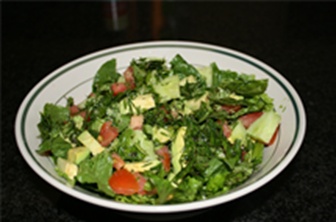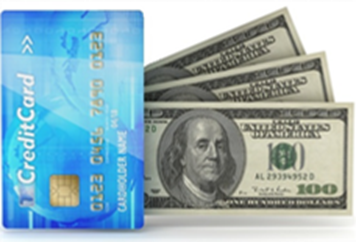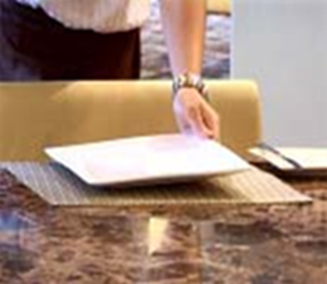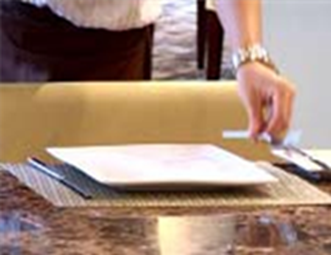Curriculum
HOSPITALITY MANAGEMENT
Module 1
0/1Starting Course
0/3Module 3
0/1After Intro
0/3RESTAURANT OPERATIONS PLANNING
RESTAURANT OPERATIONS PLANNING
·
· Menu Planning and Design
· Everything starts with the menu. The menu dictates much about how your operation will be organized and managed, the extent to which it meets its goals, and even how the building itself – certainly the interior – should be designed and constructed.
It is the foundation upon which the layout and other design functions are based.
The menu influences every basic operating activity in a food service organization, it affects management decisions about:
·
o Menu items which reflect a balance between profitability and popularity
o The usage and space required for the equipment of the food service facility
o The production methods
o Sources of good and staples suppliers
- Considerations in Menu Planning
- The menu is the plan used to achieve the organization’s profit objectives and to satisfy customers’ desires.
The main objective of Menu Planning is for the business to make a profit while catering to its customers needs, using all available ingredients, equipment, physical surroundings and skills of its employees at a reasonable cost.
During the process of menu planning, management should consider numerous factors before coming to a decision on what food and beverage items to put into a menu and how they should be priced.
A list of considerations is provided below:
- Customer-related factors
- Food-related factors
- Operation-related factors
- Marketing-related factors
- Customer-related factors focus on customers needs, food pricing plans, the sequence in which food is presented and customer dietry requirements. These factors are explained here in detail:
- Customer Types
- Spending Power
- Dining Sequence
- Special Requests

The nature of target segments would affect the decisions of what items to be provided in a restaurant.
For example, a restaurant would provide more healthy food if it mainly targets seniors.
· Food-related factors focus on cost of materials and percentage of profit, material supply and demand, nutritional values and the variety of food stuffs.
Food hygiene and safety in the preparation, sourcing and serving of dishes is also a priority.
·
o Cost
o Supply
o Nutrition
o Variety
o Hygiene

Cost and Price of Materials
Besides considering the spending power of target segments, management should also think carefully about the cost of food materials and other auxiliary costs to ensure a certain percentage of profit can be achieved.
· Operation-related factors focus on the restaurant facilities and location.
The operational hours of the menu, (breakfast, lunch, dinner) and the skills and training of the kitchen staff. These are all factors that have to be taken into consideration.
·
o Facilities
o Location
o Hours
o Skills

Facilities:
Kitchen procedures should be reviewed to ensure the food materials proposed can be handled and stored properly in the existing kitchen setting.
· Marketing-related factors focus on menu and restaurant design with an emphasis on the style and decor of the facilities and menu layout as well as the target market and comparison to competitors.
These factors are explained in detail below:
·
o Benchmarking
o Decoration
o Design
o Language
o Benchmarking:
This is applicable as it provides useful information to restaurants about what competitors are providing to their customers. It is a good source of reference when planning a restaurant menu.
· Menu Pricing
· Menu pricing is one of the critical factors to the success of a restaurant’s business. It determines how much money the restaurant would make and the perception of how much customers would be willing to pay for dining in the restaurant.
There is no standardized method in pricing the menu but a few approaches are commonly used by practitioners for different purposes.
Two different approaches to menu pricing are introduced below:
·
o Cost-based
Basically, the selling prices are marked-up from the cost of goods sold. A food cost percentage is always calculated to represent the difference between the cost and the actual selling price of the menu item as shown below:
Food Cost
Food cost percentage = ———————— x 100%
Selling Price
The food cost percentages of restaurants range from 20 to 30%. Some exceptional cases, such as steak and seafood items can have higher food costs. Beverages, usually have lower food cost percentages, meaning a higher profit margin can always be achieved.
· Menu Design
· A menu is anything you use to communicate with your potential customers by showing them what your restaurant has to offer. There are different types of menus including traditional hand-held menus, elaborately-printed menus, menu boards and even verbal menus.
· Click the button to learn more about menu design
· Everything that is undertaken in the restaurant and how the establishment is perceived, is linked to the food and menu. The menu in large part, defines the restaurant’s image and elevates or lowers the customers expectations.
First impressions are always important; the menu should complement the business. Some menus are built around the history, the cultural setting, cuisine or theme of the restaurant. Menu design should include the following seven points.
·
1. Reflect the identity and décor of the restaurant
2. The paper or card chosen needs to be of good quality
3. Menu design should be unique, simple, highly recognizable
4. The style of print should be easily read and well spaced
5. A well-identified pattern of customers eye movement can be followed
6. Clip-on inserts in menus may be used to advertise daily specials
7. Menus that contain little information fail to inspire
· Knowledge of Food and Beverage Services
· Table Setting
· The table setting portrays the image of the business and the ambience of the restaurant dining areas.
There are 10 steps in the proper procedure of a table setup for one cover:
·
o Step 1
Cover the table with a tablecloth if it is required by the restaurant. Some restaurants would use table mats to replace tablecloths when setting a table.
· Step 2

Place the side plate to the left side of the table mat. Put the butter knife on the right side of the side plate as shown in the picture with the cutting edge facing left.
Step 3

Place the dinner plate at the centre of the table mat. Be reminded that some restaurants have no show plates on a table setup
· Step 4

Put the main/dinner knife on the right hand side of the dinner plate as shown in the picture with the cutting edge facing left. And then put the main/dinner fork on the left side of the plate.
· Step 5

Put the soup spoon on the right side of the dinner knife as shown in the picture.
· Step 6
o 
Place the side/salad knife to the right side of the soup spoon with the cutting edge facing left as shown in the picture.
Step 7

Place the side or salad fork to the left hand side of the dinner fork
· Step 8

- Put the dessert spoon to the upper side of the dinner plate with its head facing left. Then, put the dessert fork between the dessert spoon and the side plate with its head facing right.
· Step 9

- Place the water glass at the upper right-hand corner of the table mat.
Step 10

Finally, place the napkin at the centre of the show plate
· Depending on the type of service, utensils are placed about one inch from the edge of the table, each one lining up at the base with the one next to it.
Napkins can be folded into many different designs and shapes to add a decorative atmosphere to the table.
The glasses should be positioned about an inch from the knives, and in order of use:
white wine, red wine, and water goblet/tumbler.
A well-laid table can add atmosphere and ambience to any restaurant.
The attached image shows the placement of items for a table setting and their names:

· Tableware, Silverware, and Glassware
· Tableware includes the dishes, glasses and cutlery used for setting a table, serving food and dining. Click on the tabs to see examples of the most common types of silverware, tableware, and glassware found in restaruants:
·
o Silverware
o Tableware
o Glassware

· Tableware, silverware and glassware are designed for functionality but items can have a variety of shapes, sizes and colors. They also offer decorative and elegant ways for restaurants and hotels to serve their food.
· Bar Equipment
· Being well equipped is one of the basic steps to running a bar. As well as having the right tools for the job, your equipment should be of good quality and durable.
The basic types of bar equipment to be familiar with are listed below:
·
o Corkscrew
o Bottle opener
o Knife/Chopping board
o Ice bucket
o Cocktail shaker
o Wine stopper
o Bar towels
· Restaurant Design and Layout
· Restaurant design can be a crucial part of building a successful brand. The restaurant layout can also affect operational efficiency.
The layouts of restaurants can be affected by many factors which include the restaurant theme, styles of services, origins of cuisine, staff-to-guest ratios, layout and size, etc.
The attached image shows a sample floor plan of a restaurant with the different sections, Point Of Sale and side station locations as well as the kitchen and the entrance and exists.

·
o
o Functional Considerations
o In the planning stage of opening a restaurant, the management should carefully think about how many sections would be set up in the site.
Also, how space can be fully utilized to enhance the profitability and operational efficiency of the business.
The layouts of different food and beverage services are very different. For example, bars and cafés generally have small kitchens, restaurants are more spacious when compared with fast food restaurants and cafeterias.
o
§ Dining Area
§ Bar Area
§ Other Facilities

It is quite common that a mid or a large-scaled restaurant would be divided into sections which enable the ease of management and manpower distribution.
The restaurant floor would be divided, with waiting staff assigned to the different sections.
Each section would then have a set number of covers, which would require 1 to 3 servers to serve the tables depending on the staff-to-guest ratio as set by the restaurant manager.
· Restaurant Ambience
· Atmosphere refers to the overall feel or mood within the restaurant, this is its ambience.
An intimate ambience can be created by low-key lighting reflecting deep shadows, creating feelings of romance, or bright lighting which could convey a cheerful ambience of happiness. The color of the lighting can also affect the restaurant atmosphere.
The music being played in the restaurant can also have an emotional effect on people.
Other factors can also affect the ambience of a restaurant, such as:
·
o Decor
o Uniforms
o Senses
o The décor of a hotel or restaurant is the style of interior furnishings. For a business in hospitality to survive it needs to measure up to every detail that ensures a comfortable and pleasurable stay for the customers as well as the food and service.
Along with other factors, decoration is an integral part of the hotel and restaurant business. Interiors of many hotels are in line with the particular hotel design concept, and each hotel or restaurant can be decorated individually – conventional, classical or contemporary as the case may be.
· Theme restaurants are those in which the concept of the restaurant takes priority over everything else, influencing the architecture, food, music and overall feel of the restaurant.
They usually emphasize fun and fantasy, glamorizing or romanticizing an activity such as sports, travel, or an era in time (Walker, 2005). According to Martin Pegler (Pegler,1997), theme restaurants are divided into six categories:
·
1. Hollywood and the movies
2. Sports and sporting events
3. Time – the good old days
4. Records, radio, and TV
5. Travel – trains, planes, and steamships
6. Ecology and the world
· The key points from this module are:
· Menu Planning
This is the foundation upon which the layout and other design functions are based. The menu influences every basic operating activity in a food service organization.
Considerations in Menu Planning
The menu is the plan used to achieve the organization’s profit objectives and to satisfy customers desires.
Management should consider numerous factors before coming to a decision on what food and beverage items to put into a menu, such as:
·
o Customer related factors
o Market related factors
o Operation related factors
o Food related factors
· Menu Design
The menu in large part, defines the restaurant’s image and elevates or lowers the customers expectations.
Table Setting
The table setting portrays the image of the business and the ambience of the restaurant dining areas.
There are ten steps that should be followed in the proper procedure of a table setup.
Restaurant Design and Layout
Restaurant layout can affect operational efficiency.
The layouts of restaurants can be affected by many factors which include the restaurant theme, styles of services, origins of cuisine, staff-to-guest ratios, layout and size, etc.